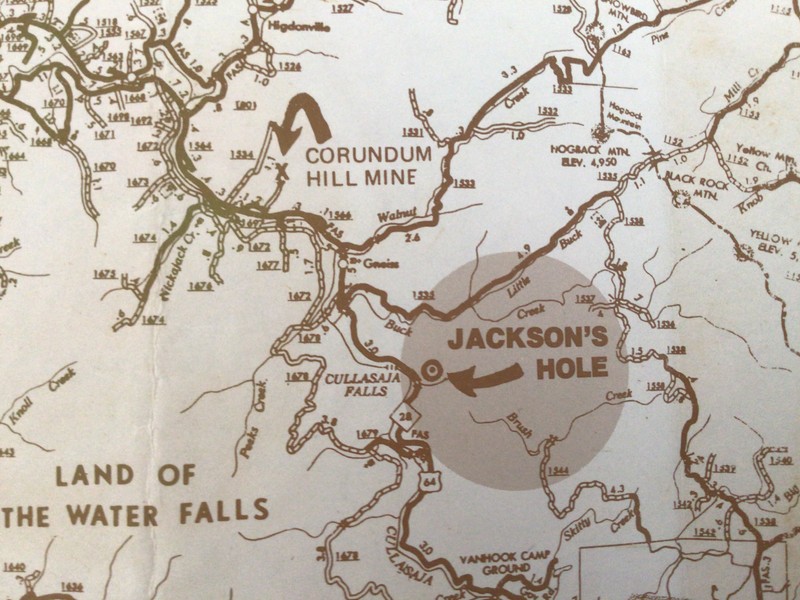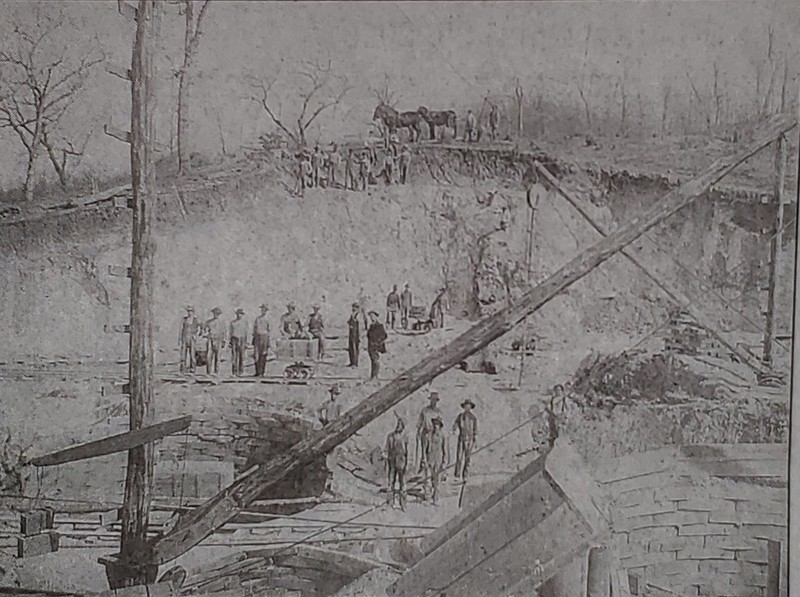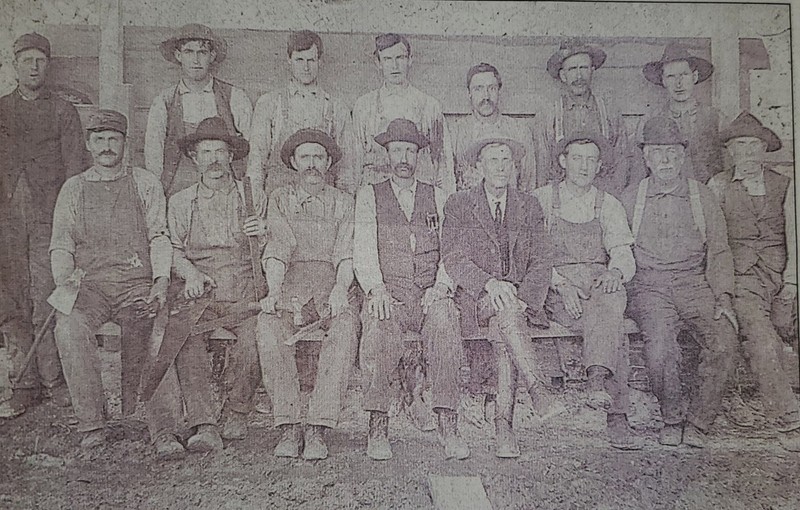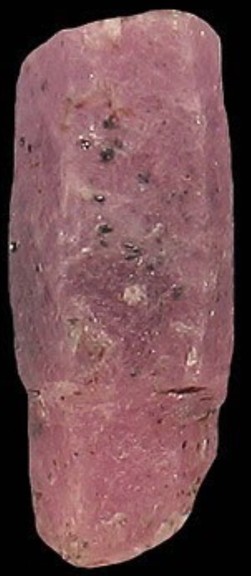Corundum Hill Mine
Introduction
Text-to-speech Audio
Images
A map of the area around the Corundum Hill Mine

Initial Mining

Miners at Corundum Hill

A piece of corundum

Backstory and Context
Text-to-speech Audio
The largest of corundum mines was the Corundum Hill Mine created by Hiram Crisp just southeast of Franklin, North Carolina, which was later bought by Hampden Emery. This happened to be, at its peak, the largest mine for corundum in the world. The mine would then later be bought by the International Corundum Company in New York which owned many other corundum mines in the area. These corundum mines combined to produce roughly $40,000 back then, which is $1,070,210 in today’s money, annually for the International Corundum Company in New York. The mine was opened in 1871, closed in the early 20th century, and later reopened as an attraction in 2016.
Corundum is a crystallized clay that was used as an abrasive and known throughout history under different names depending on culture and origin. It was found throughout the world in places such as India and Armenia. Most of the world’s corundum was known as emery, which contains trace amounts of iron and aluminum. The corundum produced at Corundum Hill was pure corundum, which was reported to be almost twice as effective as an abrasive than emery. The mine also produced chlorite, which is a broad group of silicates. It could be sold as a gem, but could be sold at a higher price if sold as an abrasive. This price was maintained at a high price with tariffs and trade deals. It was so valuable in fact, miners who took any corundum from the hill while working were fired immediately, but this did not stop some of them secretly trading a small amount of the stone they found.
Recently, the mine was bought by Corundum Hill Enterprises, where it functions as a place where visitors can mine for gems themselves. They must pay a fee for entry and to keep what they find. Plans to reopen the mine before it happened in 2016 was met with praise as it has produced a large amount of gems throughout history. Some major rocks have come from the Corundum Hill Mine. The largest chunk of corundum, a 312 pound gem found in 1872 was found here, where it now stays in Amherst College in Massachusetts. Mines in western North Carolina and the surrounding areas alone produced a massive amount of corundum at 60,000 to 70,000 pounds of the mineral per week of operation at its peak.
Although the exact date when the mine closed cannot be found, most of the corundum industry dried up in the early 20th century, along with most gem mining in western North Carolina, such as garnet and mica. The main reason behind this is tariffs. They were used to maintain the price of corundum and make sure it was profitable, but with the invention of synthetic abrasives, these tariffs were slowly reduced, until they were eventually removed. This caused corundum to be unprofitable and thus the whole industry to dry up. Recently, however, the former mines are being reopened and used as tourist attractions, such as Corundum Hill, which was reopened in 2016 for tourism.
Sources
The News and Observer, Chronicling America. March 20th 1898. Accessed May 12th 2021. https://chroniclingamerica.loc.gov/lccn/sn85042104/1898-03-20/ed-1/seq-5/.
The News and Observer, Chronicling America. November 20th 1904. Accessed May 12th 2021. https://chroniclingamerica.loc.gov/lccn/sn85042104/1904-11-20/ed-1/seq-1.
Quillen, King. "Gem Mining in Macon County Then and Now." Smoky Mountain Living Magazine (Waynesville) . Volume 4 Number 2 ed, 16-16.
Norvell, Edmund B. The News and Observer, Chronicling America. April 8th 1902. Accessed May 17th 2021. https://chroniclingamerica.loc.gov/lccn/sn85042104/1902-04-08/ed-1/seq-43/.
The News & Observer, Chronicling America . March 20th 1898. Accessed May 17th 2021. https://chroniclingamerica.loc.gov/lccn/sn85042104/1898-03-20/ed-1/seq-5/.
Brady, J P. Famous Corundum Hill, N. C. Open for Public Prospecting, Taylor and Francis Online. October 14th 2016. Accessed May 17th 2021. https://doi.org/10.1080/00357529.1965.11765733.
The Gazette, Chronicling America . August 28th 1897. Accessed May 17th 2021. https://chroniclingamerica.loc.gov/lccn/sn83027097/1897-08-28/ed-1/seq-1/.
Gordon, Samuel G. CORUNDUM HILL (FRANKLIN), MACON COUNTY NORTH CAROLINA. Journal Mineralogical Society of America189 - 190.
The Daily Citizen, Chronicling America . February 13th 1890. Accessed May 17th 2021. https://chroniclingamerica.loc.gov/lccn/sn91068075/1890-02-13/ed-1/seq-1/.
Jackson Hole Gem Mine and Trading Post
Living in Macon
Living in Macon
